Szamotuły 2024-10-24
Szamotuły Railway Station.
Geographic coordinates: 52.603N 16.585E. Elevation 68.00 m (223.10 ft). Address Dworcowa Street 40, 64-500 Szamotuły.
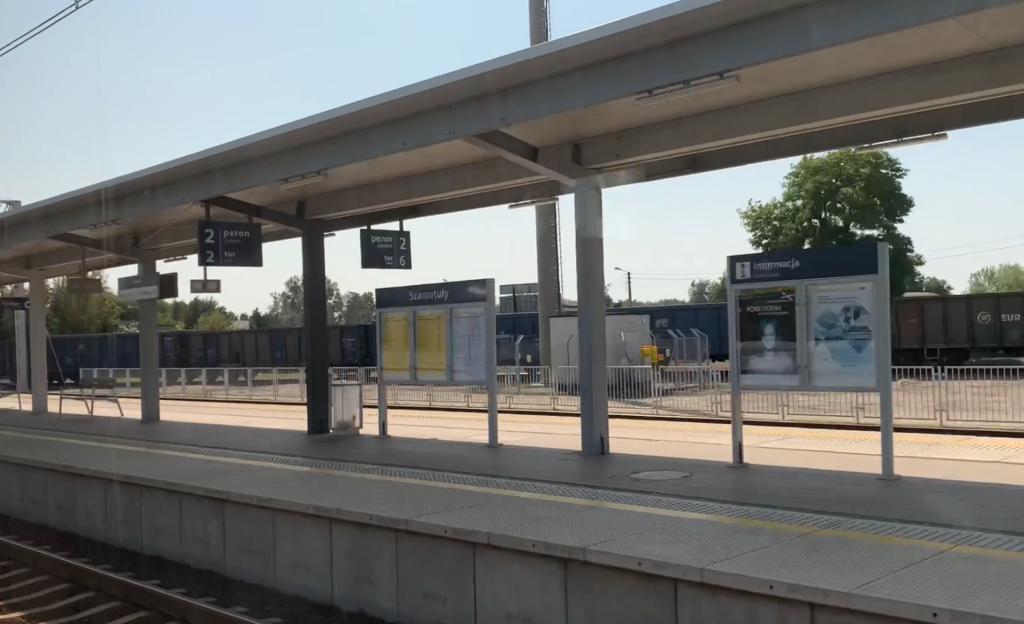
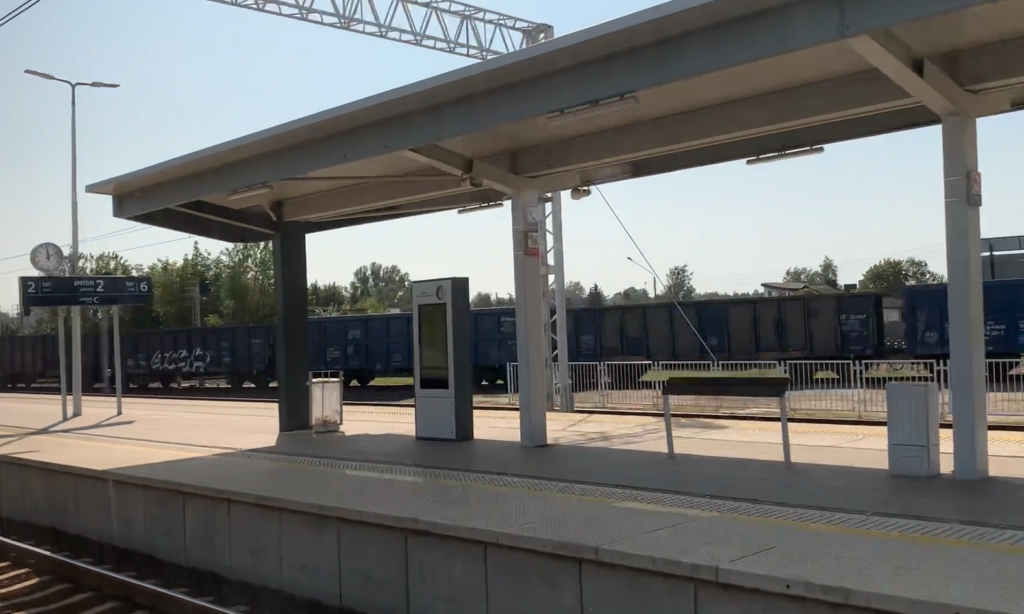
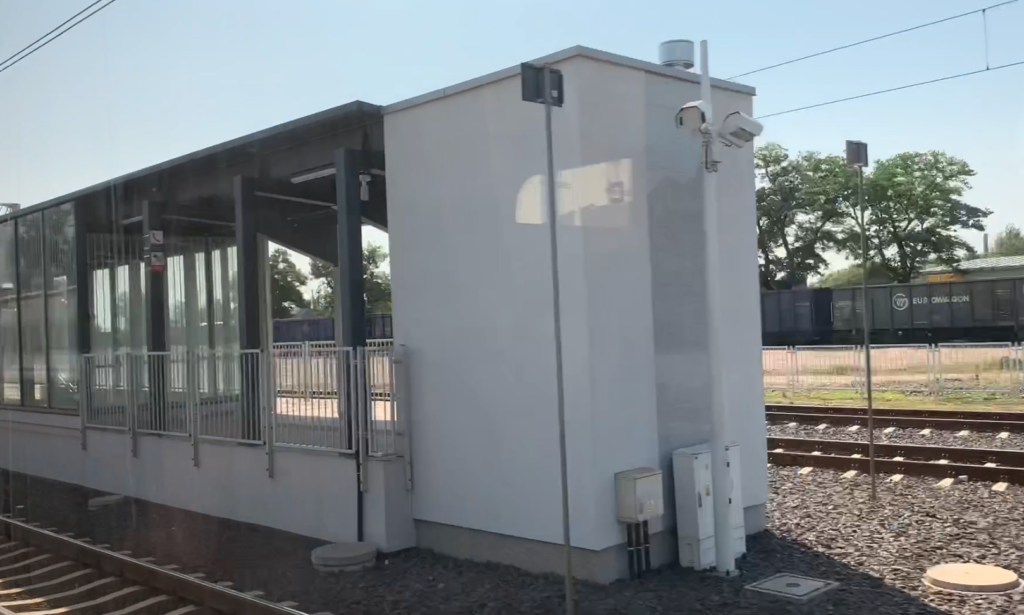
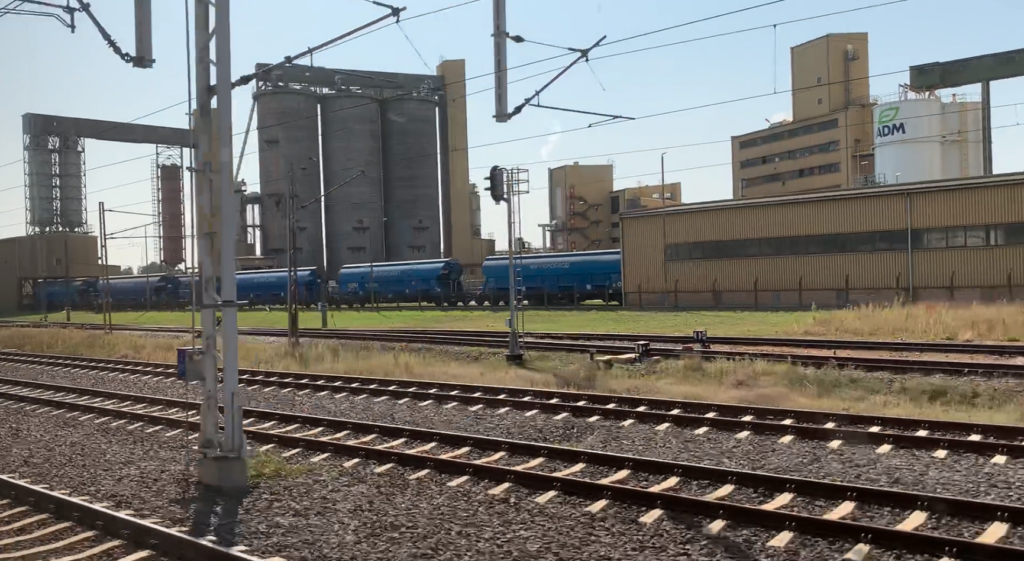
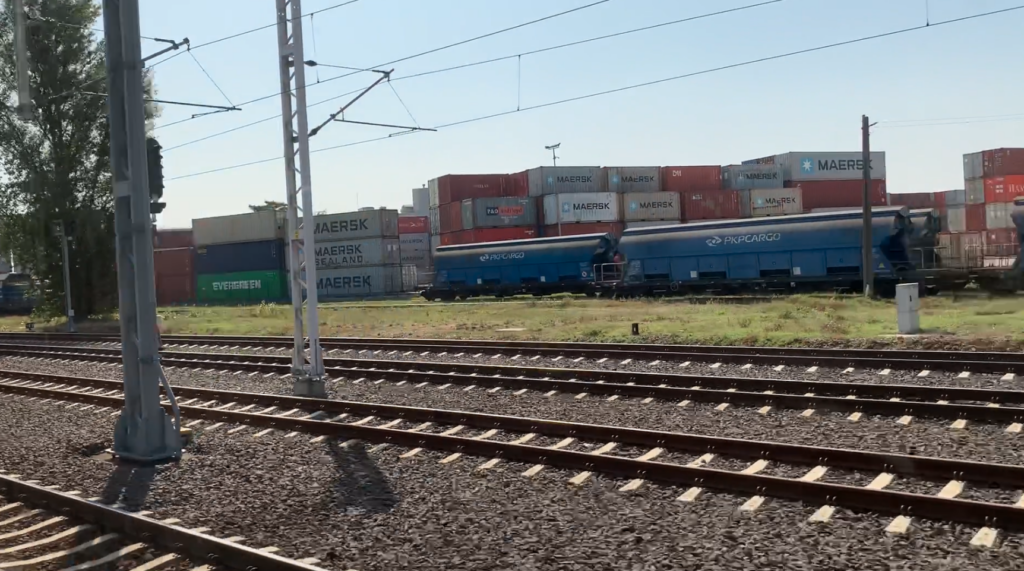
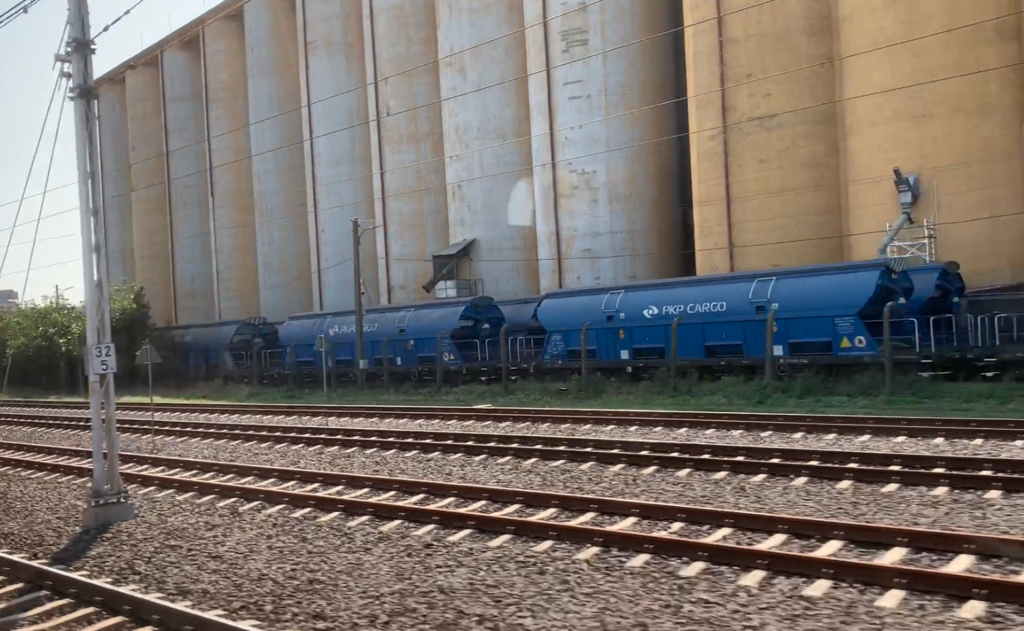
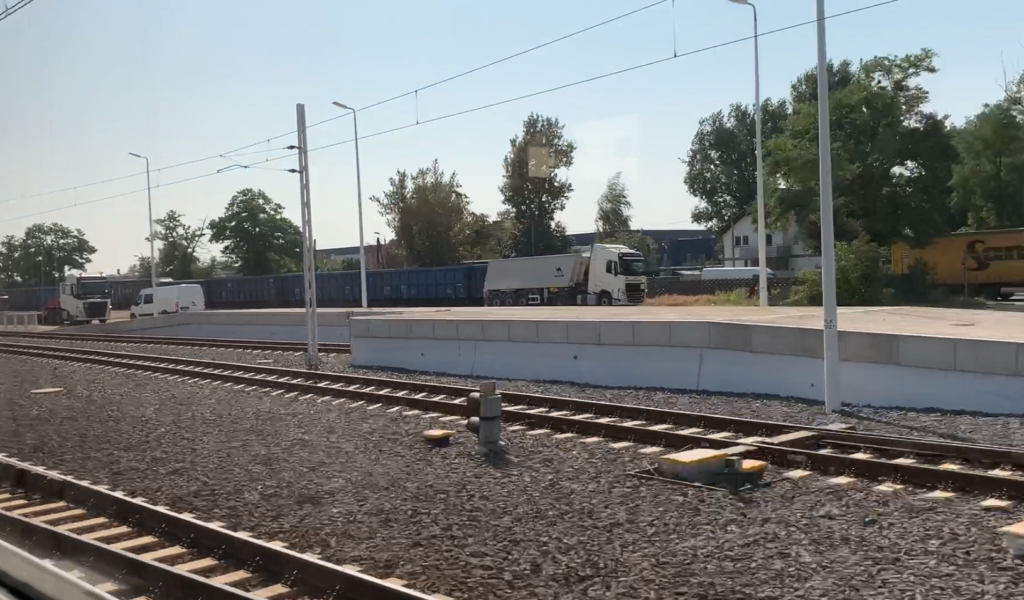
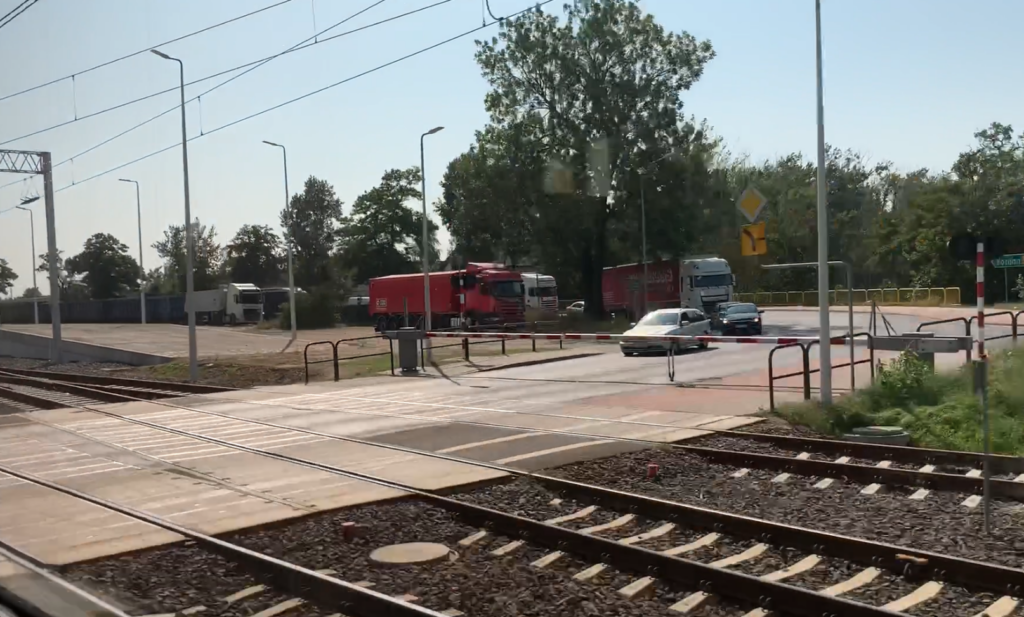
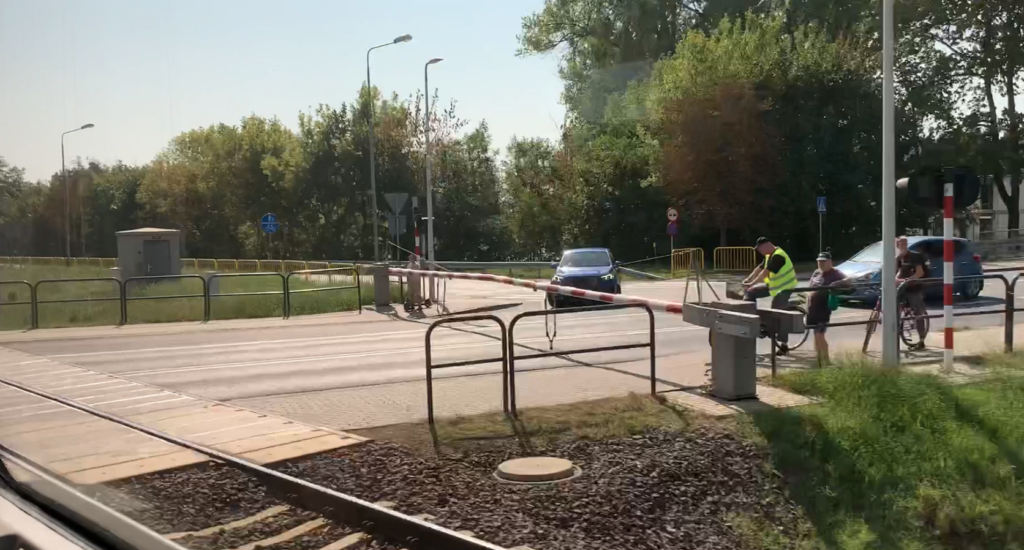
Szamotuły is a city in the Wielkopolska Province, in the Szamotuły district, in the Szamotuły commune, 33 km from Poznań, to the north-west. The city’s area is 11.08 km2. The city’s population is 18,398 inhabitants (2023). The city is located on the Sama River, which is a left tributary of the Warta River, in the Poznań Lake District.
History of the city of Szamotuły.
The settlement was founded in the 11th century. The first location of the city took place in the 13th century, and was granted by Przemysław I, Duke of Greater Poland, before 1257. The location gave the settlement the right to hold markets. The location was repeated in 1383 and the settlement became a noble city. The first name of the city was de Samotul and comes from the family name of the owner; Szamotulski. The second part of the name comes from the old Polish tuł, meaning sajdak, or tulić, meaning to hold. The noble family was Szamotulscy of the Nałęcz coat of arms. At the beginning of the 13th century, the first parish was established and a church dedicated to St. Martin was built. Then, Franciscan monks were brought in to build a monastery and a church. The city’s location on the Szczecin-Poznań trade route influenced the development of the city, which became a center of trade and crafts. In 1445, the castellan of Poznań, Dobrogost Świdwa, founded a parish school in Szamotuły. In the first half of the 16th century, Lutherans, Calvinists and the Czech Brethren began to arrive in Szamotuły, due to the tolerance prevailing in Poland. In Western Europe, they were threatened with the death penalty. At the turn of the 16th and 17th centuries, Szamotuły achieved high economic development. The number of fairs and markets increased to 12 per year. There were 14 craft and trade guilds in the city. The largest was the cloth guild. Cloth was exported abroad. There were many workshops; rope makers, oil makers and potters. The partitions of Poland hindered the development of the city. The occupiers imposed additional taxes and restrictions on the residents. The difficult situation of the inhabitants of Greater Poland led to the outbreak of as many as three Greater Poland uprisings; 1794, 1806, 1848.
In 1848, the Stargard – Krzyż Wielkopolski – Szamotuły – Poznań railway line was launched. The line allowed travel to Szczecin and Berlin, from 1851, to Bydgoszcz and Tczew, and from 1856, to Leszno and Wrocław.
Without a doubt, the railway line contributed to the industrialization of the city of Szamotuły. In 1892, the company “Sugar Factory Szamotulska – Zuckerfabrik Samter G.m.b.H.” was established, headed by Count Twardowski. A factory was funded, which started operating in 1895. In 1897, the Koerpel brothers founded a furniture factory on Dworcowa Street, which remained under the name “Koerpel Brothers’ Furniture Factory” until the outbreak of World War II. In 1905, Mr. Gorzelańczyk built a rye mill on Młyńska Street. In 1910, an oil mill was built on Dworcowa Street. But the situation of the Polish population was increasingly difficult. Wages were low, and Germanic was mandatory in factories, shops and on the streets. Strikes broke out, even by school children. On December 28, 1918, the residents (Greater Poland insurgents) themselves retook the city from the Germanic hands. The insurgents from Szamotuły set off to help the Polish population in other cities in Greater Poland. The interwar period was a period of cultural flourishing for Szamotuły. The population also grew systematically. In 1921, it amounted to 6,772 inhabitants, and in 1938 it was already 9,197 inhabitants. It is worth mentioning that during the Germanic occupation, the population of the city did not exceed 3,000 people.
On September 7, 1939, Germanic troops occupied the city of Szamotuły. Another Germanic terror began. The Germans called Greater Poland the Warthegau. The Polish population was deported on a mass scale to the General Government, and Germanic colonists were brought to Greater Poland. The Germanic occupation lasted until January 27, 1945, when the Soviet occupation began. The Germans fled, and those who survived the occupation and Poles from the Kresy returned to Szamotuły. In 1946, the population was 8,800, and in 1961, 12,046 residents. Industrial plants started operating again.
On August 11, 1945, there was a skirmish at the Szamotuły station between Soviet soldiers and officers of the MO and UB (Polish people). Such skirmishes occurred in Poland many times. For example, there is a very well-known skirmish in Leszno, which ended with a court crime against a Polish officer of the Polish Army. The incident in Szamotuły was the result of the banditry of a 60-person group of Muscovites, who, completely drunk, robbed travelers at gunpoint and provoked a fight with Poles on the Poznań-Krzyż Wielkopolski train. The Muscovites forcibly took away the travelers’ watches and hand luggage. There was an exchange of fire between the Muscovites and officers of the MO and UB. One Polish policeman and several Muscovites were killed. Several civilians were injured. 36 Muscovites were arrested, but were released after sobering up. Because you can’t punish “liberators”. It is not known whether Polish officers suffered the consequences.
The socio-economic changes of 1989 led to the collapse of many industrial plants throughout Poland. There was no vetting and decommunization. And currently (2024) Poland is ruled by Volksdeutsche, Masons and communists. The Catholic faith, Polish family and Polish history are under attack. In the period 2001-2006, Szamotuły industrial plants went bankrupt; furniture factory, sugar factory and mills. In the 90s, the sugar factory was sold to Nordzucker AG, to be liquidated in 2003. The land after the sugar factory was sold in 2004. “Koerpel Brothers Furniture Factory” was founded in 1897. After the Second World War, the plant was nationalized, first operating as Szamotulska Fabryka Mebli, and then as a subsidiary of Wielkopolskie Fabryki Mebli based in Oborniki. Over 80% of production was exported, mainly to Sweden and Norway. WFM recorded losses since 1998 and was liquidated. After the factory was closed, part of the land was sold, and a foreign supermarket Tesco was built in place of the factory buildings. The furniture factory, sugar factory and mill were liquidated at the beginning of the 21st century. The only plant that survived is the oil mill. The only plant that survived is the oil mill. It was built in 1910, on Dworcowa Street. At the beginning of the 21st century, the oil mill on Dworcowa Street was closed, and the plant operates on Bolesława Chrobrego Street as ADM Wielkopolskie Zakłady Tłuszczowe. The former oil mill was replaced by a German Lidl supermarket, a housing estate, and a former office building was renovated and rented out by a private investor. The current plant belongs to the American ADM group, which employs around 480 workers in Polish plants in Szamotuły and Czermin.
Next to Wielkopolskie Zakłady Tłuszczowe, until recently, there was a Royal Brinkers Polska margarine plant, built in 2004. Several dozen people worked in the 3,000 m2 hall, and the technological line allowed for the production of up to 3,000 kg of margarine per hour. Currently (2024), the margarine plant building is for sale. The second main industrial plant next to the fat plants is a concentrated feed plant. Also built on Bolesława Chrobrego Street in 1962. At the end of the 80s, it belonged to the District Feed Processing Company Bacutil in Poznań and employed about 120 people. Then it was taken over by the Dutch Cehave, and since 2010, Agrifirm. There are several smaller production plants in Szamotuły and the surrounding towns. There are 190 entities registered in the National Court Register with their registered office in Szamotuły. In the register of the Central Registration and Information on Business Activity, there are 1,647 registered people conducting business with their registered office in Szamotuły.
In 2014, a helicopter landing site Szamotuły – Szpital was put into operation on Zamkowa Street.
Railway in Szamotuły.
In 1848, the Stargard – Krzyż Wielkopolski – Szamotuły – Poznań railway line was launched. The line allowed travel to Szczecin and Berlin, from 1851 to Bydgoszcz and Tczew, and from 1856 to Leszno and Wrocław. In the period 1907-1908, the LK Szamotuły – Międzychód was launched. This line carried passengers until 1995. The Szamotuły railway station bore the Germanic name Samter. This was in the period 1848-1919 and 1939-1945.
In the history of the station there was a locomotive shed that serviced locomotives on the Szamotuły – Międzychód route. The locomotive shed had a turntable due to the location of the building, which had only one stand. The turntable was eliminated at the turn of the 80s/90s of the 20th century.
The station, with its surprisingly simple shape, is covered with a gable roof. Currently, there are ticket offices and a waiting room in the building. There used to be a buffet here as well. Currently, not the entire building is used. The building is made of brick and is plastered. It has two storeys with a developed attic. Other station buildings were demolished during the last renovation. The unused water tower stands on Dworcowa Street in the immediate vicinity of the station building. The tower is octagonal. The base of the tank is made of brick, and the top is finished with boards. There is a toilet building between the station and the water tower. There is a new ramp at the station.
There were two low platforms at the station. Platform 1 was single-edged from the station side. Platform 2 was island-like, double-edged. On the platforms there were only benches, waste bins, lighting and an audio system. There were no shelters. The surface was made of asphalt. Access to Platform 2 was at the level of the tracks.
In 2019-2020, the Szamotuły station was renovated. Two new high platforms, island platforms, each with two edges, were built. The platforms were moved towards Poznań. The platforms are 300 m long. The platforms were roofed. The platform edges were made of prefabricated gray slabs with a yellow warning line and buttons. The rest was covered with pavement tiles. A linear water drain was installed. Benches, rests, information display cases, waste bins, and an audio system were installed on the platforms. In 2021, a tunnel for travelers was built, which was equipped with lifts for people in wheelchairs and families with children in strollers.
The station is equipped with ESA 44-PL computer traffic control devices, remotely controlled from LCS Poznań III at Poznań Główny station. At Szamotuły station, the SRK devices are located in a container building, which was marked “Sa” and is located near the station building. The old relay signal box was on the Rokietnica side and was operational until 2020. The semaphores are illuminated. Sidings at Szamotuły station; Viterra Silos Elewator Zbożowy Szamotuły siding. Former oil mill siding. DOLATA siding. OST SPED INTERMODAL siding. AGRIPLUS feed mill siding. Wielkopolskie Zakłady Tłuszczowe “ADM SZAMOTUŁY” siding.
Over the past 10 years, passenger traffic has been intense. 1,700-1,900 people used the station daily. The collapse to 900 passengers during the day occurred during the Chinese virus pandemic.
Railway lines in Szamotuły.
Railway line No. 351 Poznań Główny – Szczecin Główny, is a mostly double-track line, of national importance, electrified with 3 kV DC current. The line runs from the south-east to the north-west. The length of the line is 213.500 km. Maximum speed 160 km/h.
Railway line No. 368 Szamotuły – Międzychód, was a single-track, non-electrified line, of local importance. The line ran latitudinally. The line was 57.312 km long. Maximum speed was 60 km/h. LK No. 368 was put into operation in stages. In 1907, the Szamotuły – Binino and Chrzypsko Wielkie – Międzychód sections were launched. In 1908, the Binino – Nojewo and Nojewo – Chrzypsko Wielkie sections were launched. The peak of passenger transport was recorded in the 1970s, when 4,800 people were transported per month. In the period 1977–1978, a thorough renovation of the line was carried out, improving the embankments, replacing wooden sleepers with concrete ones and replacing the rails. In 1990, up to 3,000 people used passenger trains per month. The liquidation of the line consisted in limiting the number of connections and arranging train traffic schedules that were unfavourable for passengers. The line was one of the first in Wielkopolska to be affected by cuts in transport. Traffic was suspended in stages. In 1995, passenger traffic. In 1996, freight traffic on the Szamotuły – Sieraków Wielkopolski section. In 2012, freight traffic on the Sieraków Wielkopolski – Międzychód section. The line was removed from the railway register already in 2000. After 2000, tourist rides with historic rolling stock and railcars were occasionally organized on the line. In 2004, there was a proposal from the PKP PLK company to hand over LK No. 368 to the local government, which did not happen. In 2012, there was a proposal to reconstruct the track into a bicycle path, which was met with protests from residents. In 2015, the Civic Platform government rejected the proposal to renovate LK No. 368 together with the renovation of LK No. 351, as uneconomical. The residents were ignored by the thesis that if the line was necessary, it would be rebuilt. There were already decisions to dismantle the line.
On July 13, 2021, the driver of a truck passing under the viaduct on Poznańska Street in Sieraków ignored the existing height restriction of 3.5 m and caused the vehicle to hit the viaduct structure, shift it relative to the track axis and, as a result, fall onto the vehicle and the roadway.
On March 1, 2023, a tender was announced for the development of design documentation for the revitalization of LK No. 368 under the Kolej Plus program, with its adaptation to a speed of 120 km/h. Unfortunately, in 2024, the December 13 coalition (folksdeutsche, freemasons and communists) began to govern Poland and the plans were thrown into the trash.
Written by Karol Placha Hetman
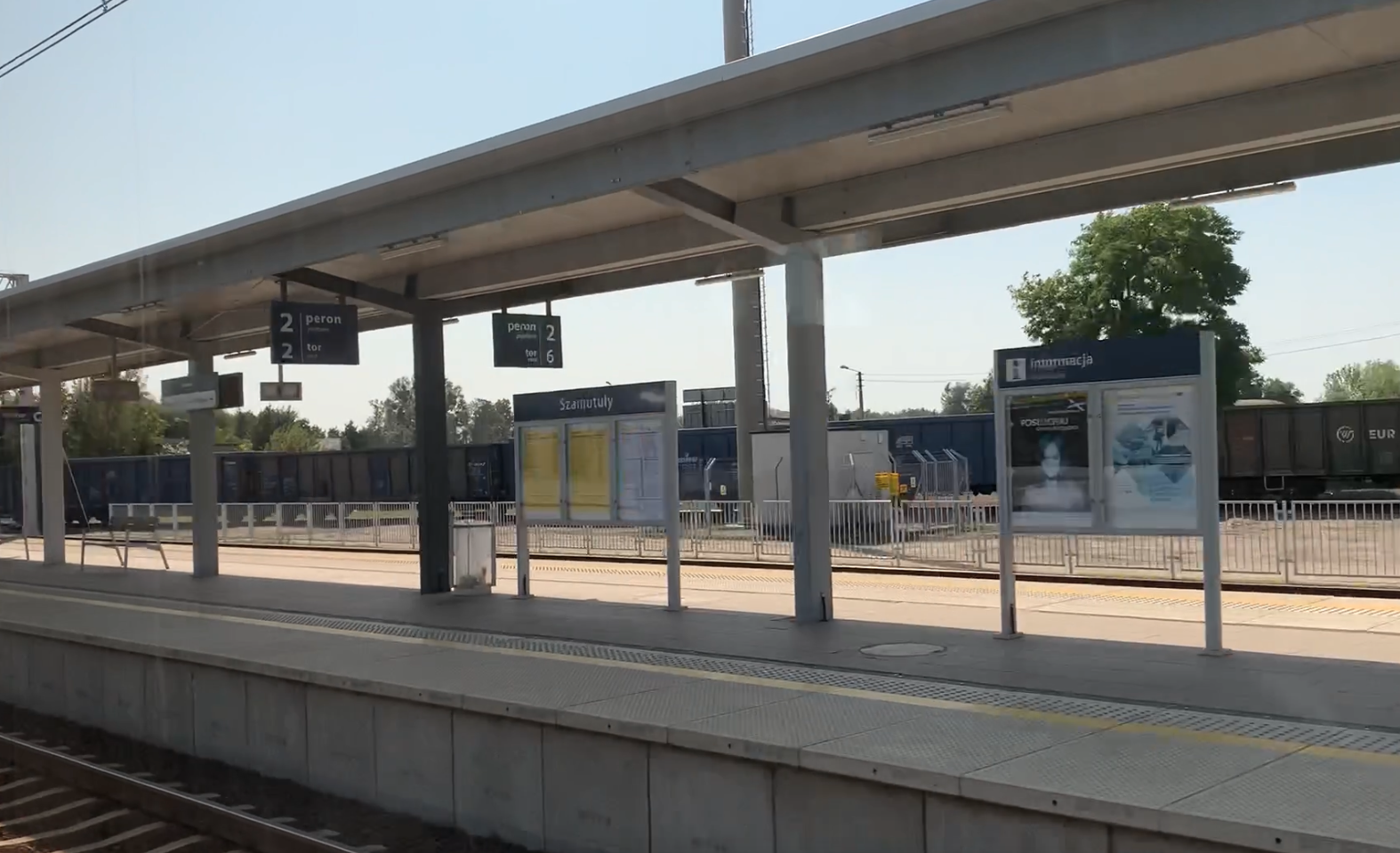
Leave a Reply
You must be logged in to post a comment.